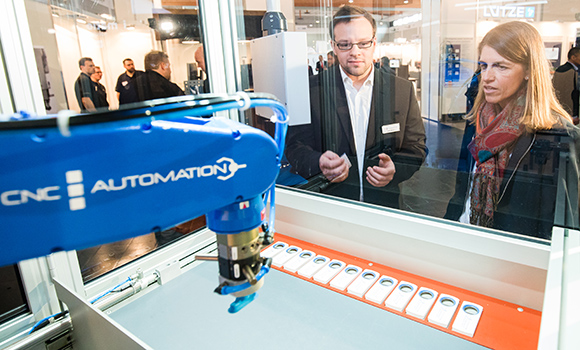
(Photo Credit: Untitled Exhibitions/Flickr)
California needs to think tactfully about how to help skilled and other stranded workers as the market faces unending, continuous change – public-private-civic partnerships with local community colleges is part of the solution.
“Stranded workers are those individuals who feel displaced in this economy and have a difficult time seeing their health and well-being in the economy to come,” said Van Ton-Quinlivan, vice chancellor for workforce and economic development for the California Community Colleges, in a recent interview with the Chronicle of Higher Education.
There are many Californians currently in this situation who feel this insecurity as technology drives trends like robots, autonomous vehicles and other so-called “job killers” become more commonplace in the dynamic California economy.
The World Economic Forum predicts, in a recent report by the Investor Responsibility Research Center Institute, that 30-50 percent of retail jobs are at risk once automation technologies are fully incorporated into more workplaces. This will result in a high net loss of retail jobs and put these workers at risk of joining the ranks of stranded workers.
The life cycle for new technology has changed from decades to as little as a year or two. These technical evolutions can throw off companies, let alone workers. As a result, education and training cannot continue as “business as usual” – upskilling these workers for the future economy must be a state priority.
Increasing opportunities for workers to be able to learn – while continuing to earn a paycheck – is essential to keep up with the pace of change and to avoid leaving anyone behind. Elevate CA, a CA Fwd and California Economic Summit initiative, is leading the way to the development of a public strategy for reviving economic opportunity and resiliency for urban and rural, north and south, inland and coastal California – positioning the state to thrive in a low-carbon, high-tech and increasingly connected world.
No one is disposable and helping the working population adjust to workforce changes is critical California’s future economy. California Community Colleges have taken steps to address the issue – embracing the opportunity to be a more responsive system and providing accessible short-term opportunities for workers to get a “booster shot” of skills.
Apprenticeship programs by design are effective at preparing students for the demands of the field, as employers are co-creating the curricula and training structures with public partners. Community colleges are thinking strategically about other opportunities to serve stranded workers – realizing that the way learning is delivered may need to shift. Instead of going to a college campus for training, colleges are figuring out how to bring the training to students and workers, businesses and communities.
New initiatives like CCC Maker and New World of Work are supporting creative spaces for people to earn industry-valued credentials and learn 21st-century employability skills to keep a job and advance in their careers. It’s helpful to decode pathways from one job through training to a new career. This can be overwhelming and misunderstood by many stranded workers and become a significant roadblock. The decoding is also an attempt to make those new job titles feel more familiar to the current working population, especially to veterans. California’s public and private partners need to go all in on this effort.
At the 2017 California Economic Summit on November 2-3 in San Diego, partners both new and will meet to discuss this important workforce opportunity. A conversation on November 2 will focus solely on the need for a strategy to Elevate CA and inspire action for 2018. Later in the evening, a reception conversation – led by Vice Chancellor Ton-Quinlivan – will look at the support that currently exists for stranded workers and how Summiteers can do their part to further the effort.
This is an all-hands-on-deck effort, so please join us for this conversation by registering for the 2017 Summit here.

